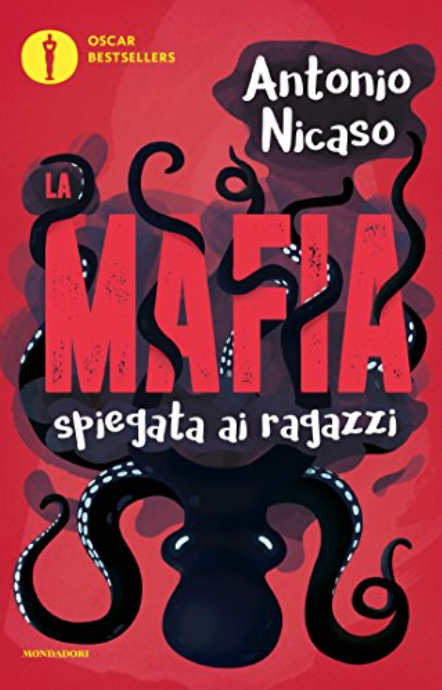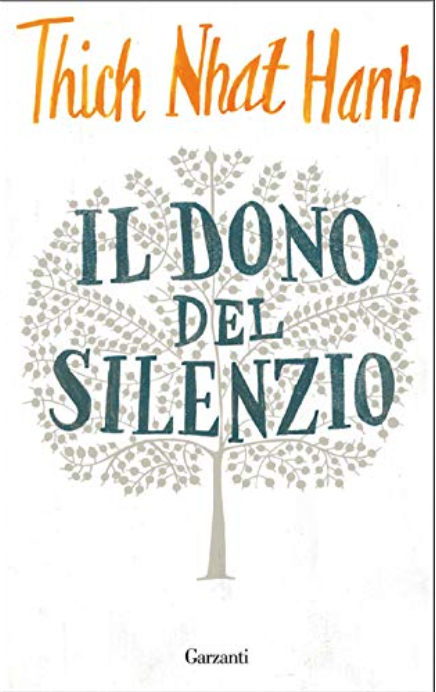This is my list of the non-fiction books I have read in the last few years. Every book on this list has inspired me in one way or another. Some books were recommended to me by my lovely students too! Since I believe that reading non-fiction in Italian is an excellent exercise for intermediate and advanced learners, I hope you will also find any of these books a valuable addition to your Italian language bookshelf. Read this article too.

1. La mafia spiegata ai ragazzi – Antonio Nicaso
The Mafia and its implications in our society are not easy to explain to foreigners, as it has its roots in the cultural and political context of centuries of Sicilian/Italian history. That is why I have begun to recommend to my students who are interested in learning more about the Mafia to read “La Mafia spiegata ai ragazzi.” This short book is thought to explain the Mafia to young adults. This format is handy as the language is tailored to younger readers and is suitable for most intermediate Italian learners.

This very delightful book explores the concept of Ikigai, a Japanese word that stands for the reason to live or the reason to get out of bed. After researching the lives of many people who stand out for their longevity, the authors concluded that the main ingredient for a happy and long life is the Ikigai itself. This book inspired the 2nd episode of my podcast, 7 Minutes in Slow Italian, where I discuss the idea of Blue Zones.

This is a book I was recommended by one of my students a couple of years ago. It’s a bestseller revolving around the idea that waking up a little earlier every day can help you be more productive and energetic in the long term. The authors promote the idea that the morning is the best time of the day to cultivate one’s hobbies or complete the tasks that we might not be able to finish after our regular workday as an Italian proverb recites, “Il mattino ha l’oro in bocca” (the early bird catches the worm).

4. Le parole sono finestre (oppure muri)
If you had to choose just one book out of this list, I would opt for this one. Marshall Rosenberg, an American Psychiatrist, developed nonviolent communication. The manual provides a set of skills and guidelines to use in our daily conversations with friends, family, and clients, and it teaches us how to understand our deeper needs and the needs of others using only the power of listening and peaceful communication. This was a life-changing read for me, and I think for most people who have read it.

Another great way to integrate authentic Italian reading into your Italian routine is through Italian graphic novels. That’s a fantastic way to learn because the content comes in the shape of conversations, and the drawings will help your understanding. Salvezza is one of my favorite examples of graphic novels, which I have already used with many of my students in my Italian fluency programs. This work results from the author’s experience of spending a whole week on an ONG ship rescuing immigrants in the Mediterranean Sea and of the interviews they conducted with the staff and the refugees on the boat.

Another incredible short book written by a Buddhist monk and Nobel nominee, Thich Nhat Hanh. His short book revolves around how we need silence to listen to ourselves and stop the mental chutter that “pollutes” our lives. It’s easier said than done, but this little gem of a book is a good start.

This is one of my favorite books, and guess what? The suggestion came from one student. This book explains why it is essential to quiet our minds and clearly and straightforwardly why it is so hard to stop our thoughts. It is so good because it also explains what induces our inner chatter and prevents us from living in the here and now. I enjoyed every minute of this reading and it helped me improve my focus, mindfulness, and concentration.

8. Il monaco che vendette la sua Ferrari
This is an international bestseller about the spiritual journey to embrace a more spiritual way of life after a significant life event. His spiritual journey brings him to India, where he meets all the spiritual gurus that changed his life forever. The whole book is a metaphor for the path of self-growth and uses the monk’s experiences to teach great life lessons.

This book, which was one of my favorite reads in 2021, looks at the migratory, economic, and social flows that will make our world the focus of attention in the next thirty years. Parag Khanna, the author, wonders which countries will succeed and which will fail, which ones will be able to survive the climate change crisis and, at the same time, returns to wonder about those who have been marked by pandemics, plagues, wars, and genocides. If you’re interested in geopolitical affairs, this is to stretch your Italian with.
Why reading books in Italian is brilliant idea for your Italian
Do you know that 70% of the vocabulary of educated people comes from reading in their mother tongue?
Reading is widely recognized as one of the most powerful learning tools for foreign languages.
The reason is that when you read a book in Italian (or any other foreign language),
- Reading in Italian is an excellent way to get the hang of the prepositions or verb conjugations: as you read, you visualize and absorb the (correct) language naturally. You unconsciously absorb grammar patterns and the correct spelling of words. In other words, when reading in Italian, you polish your Italian.
- It does not sound like “learning.” Forget about those boring textbooks where you are forced to read about Marco and Chiara’s happenings on vacation or at the supermarket. You are in charge of the content you want to spend time with.
- Through Italian reading, you reactivate all the passive vocabulary that you have previously internalized during your Italian lessons or trips to Italy.
When my students ask me to recommend what Italian books to read, I always give them two pieces of advice.
- Pick something comprehensible (you should understand at least 90% of it).
- Read nonfiction books.
Why the letter?
Why is reading nonfiction books in Italian a great idea?
I love nonfiction books. When I end up reading a great book, I habit reading it a second time in a different language. I have read in five other languages so far and profoundly enjoyed every minute of it. Despite my personal experience, I think nonfiction books offer the opportunity to learn and improve your Italian and expand your horizons in your field of interest.
In addition, I find the language used in a nonfiction book way easier to remember and even more useful. When you read something related to a field that interests you, you are more likely to retain that vocabulary and use it in your Italian conversations.
I will never stop saying that language is a tool to expand your knowledge, hobbies, and visions. It’s never the final destination. Use the language with a purpose.









